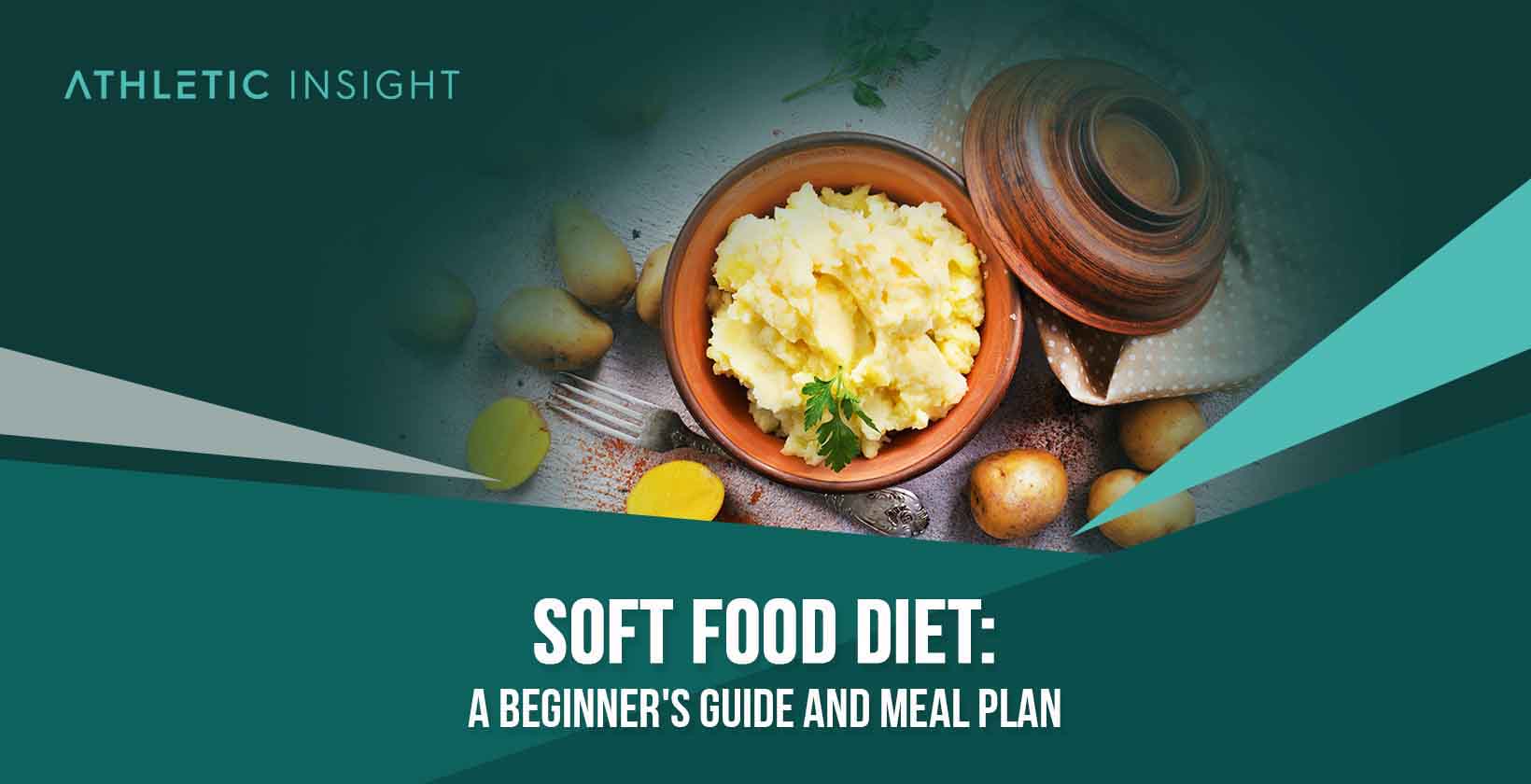A soft food diet is a dietary protocol that involves consuming easily digestible foods. The diet includes textureless, low-fiber foods that require limited chewing. The importance of a soft food diet is to provide relief to the mouth, jaw, and digestive system without depriving the body of necessary nutrients.
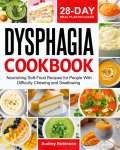
Easy to digest
Easy on the jaw
Easy on the teeth
The benefits of using a soft food diet include gaining nutrients independently without stressing the body. It’s easy on the teeth, jaw, esophagus, intestinal tract, and stomach by reducing the amount of work they have to do and avoiding irritants, like spicy food. There are only two types of soft food diet.
- Mechanical Soft Food Diet: Eat ground, mashed, or pureed foods that reduce the amount of chewing necessary. It may include tender foods that people can mash with a fork.
- Pureed Soft Diet: Eat only foods that don’t require chewing, so only pureed or liquid meals.
This guide covers the main points and features of soft food diets, including benefits and meal plans. As always, consult with your doctor before making any drastic changes to your diet.
What is a Soft Food Diet?
A soft food diet is a dietary approach that consists of eating foods that are gentle on the stomach. These foods aren’t tough to chew or swallow and are easier to digest. Doctors typically prescribe this diet to aid in healing jaw pain, recovery after surgery, or promote gut health in those with digestive tract problems.
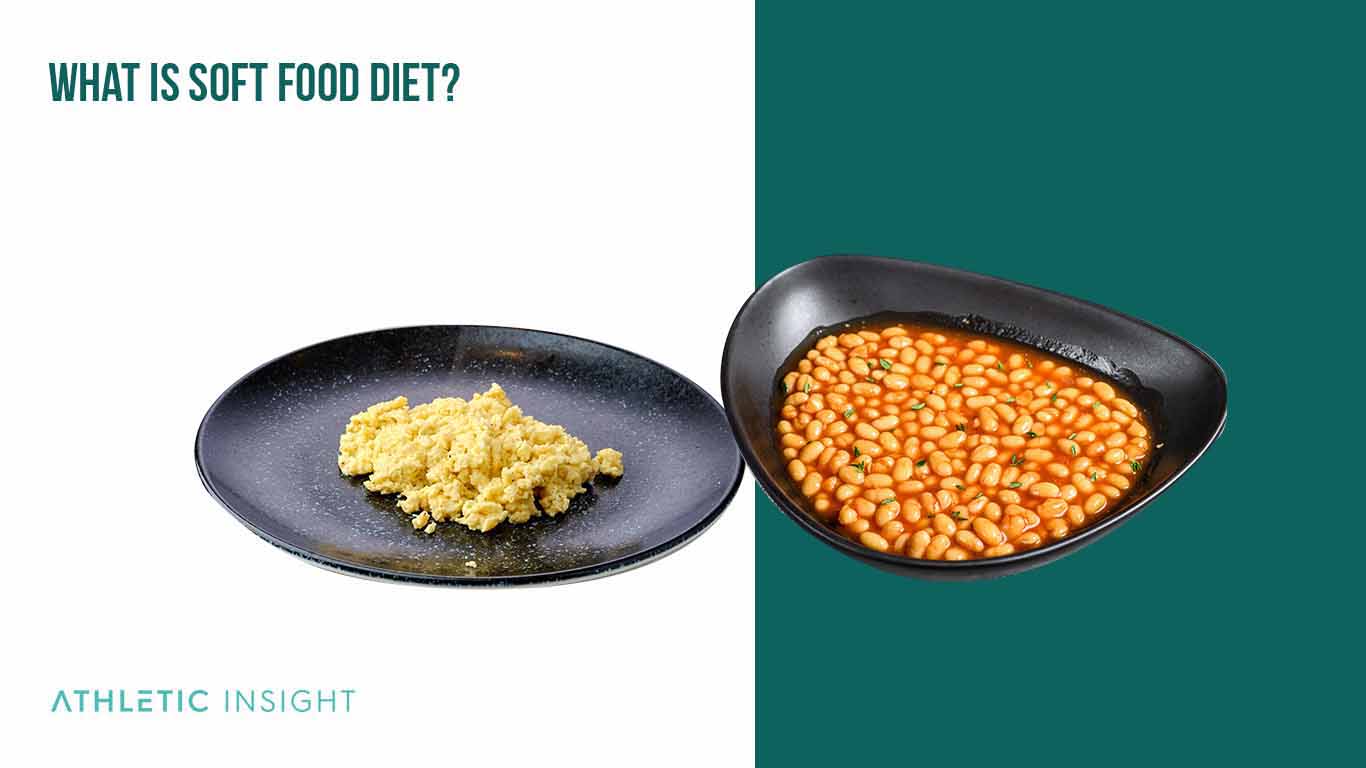
The soft food diet can also be a transitional meal plan that eases the body’s transition to eating solid foods or weaning off solids for a liquid cleanse. In this case, it helps the digestive system adjust to a different type of diet without stressing the intestines or stomach.
How Does Soft Food Diet Work?
The soft food diet works by reducing the amount of chewing required to eat while making food easier to swallow and digest.
What Are the Initial Reactions of the Body to Soft Food Diets?
The initial reaction to a soft foods diet is less strain on the teeth, jaw, and digestive system.
Solid foods aren’t easy to digest, and there are times the body needs to gain nutrients without working so hard. For example, eating solid foods immediately after surgery can delay recovery because the digestive tract has to work too hard.
Surgery and anesthesia are a form of trauma on the body, and allowing the organs to adjust promotes faster healing. A soft food diet can help the body adjust to no food, an IV drip, or a liquid diet instead of shocking it with solids.
Another potential reason to stick to soft foods would be pain or surgery on the jaw or mouth. An example would be a temporomandibular joint disorder, a disease in the jaw that makes chewing hard foods excruciating.
Cancer patients often rely on soft food diets during treatment cycles. This diet can make things easier on the body when simple things like chewing can feel too difficult. It can also help patients work through nausea and appetite loss by making mealtime less stressful and avoiding strong scents or flavors.
Soft foods can offer the nutrients and calories needed to aid healing without adding to discomfort. If you are having a difficult time consuming calories, and do not want to be on a liquid-based diet, the soft food diet is best.
What Are The Health Benefits of a Soft Food Diet?
There are numerous health benefits to a soft food diet.
- Soft food diets allow the body to heal properly after surgery or trauma.
- It provides the perfect transition between liquids and solids, making healing easier.
- Soft food diets can prevent further pain in the jaw.
- A soft food diet makes digestion easier and won’t irritate the digestive system.
- A soft diet can offer the necessary nutrients without the physical stress of solid foods.
What Are The Health Risks of a Soft Food Diet?
The health risks of soft food diets can increase the longer a person relies on them. Since soft food diets are transitional meal plans, there are some drawbacks if used too long or incorrectly.
- Being on a soft food diet for weeks can weaken the jaw.
- While soft diets can cover the nutrients we need, it does not cover all of them.
- It’s crucial to drink a lot of water and keep hydrated.
- It’s possible to lose an unhealthy amount of weight due to decreased caloric intake.
How to Do A Soft Food Diet?
A soft food diet is simple and easy to follow, though some people may require assistance if they are too weak to prepare meals.
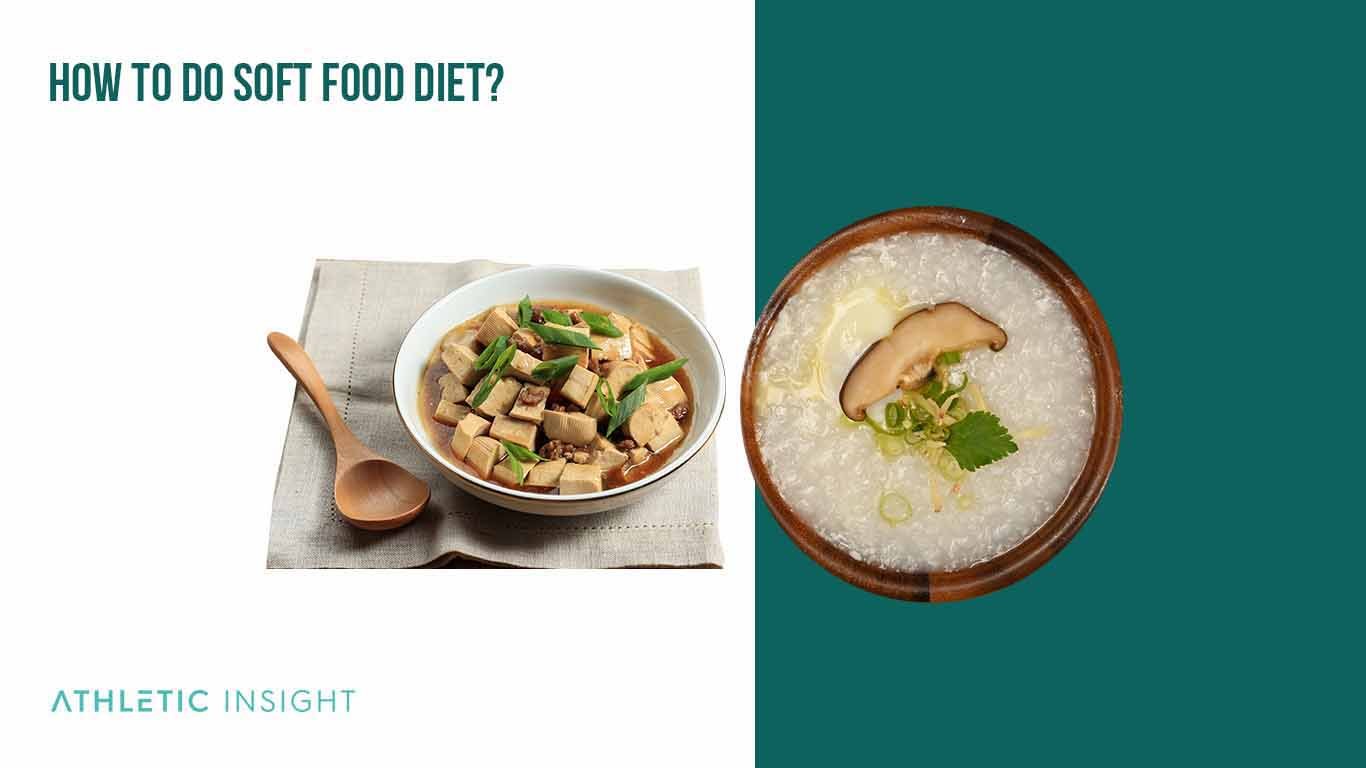
- Stick to soft foods only. Doctors generally provide lists of foods to eat and those to avoid to make things simple.
- Choose enjoyable soft foods off the list, including fun treats like ice cream and sherbets to make it easier.
- Instead of having large meals, eat several smaller meals each day.
- Cut the portions into smaller pieces to help with chewing, swallowing, and digestion.
Despite being on a soft food diet, focus on foods that offer protein and calories. When following a soft food diet, consume at least 1200 calories per day for people who typically eat the recommended 2000 calories a day.
The proposed time frame for a soft food diet is two to three weeks. Every situation is different, so it’s important to follow recommendations from treating professionals.
Some best practices to follow on a soft food diet include;
- Weigh in regularly to monitor weight loss. Rapid weight loss can be problematic and should be discussed with a healthcare professional.
- Be sure to sit upright for at least thirty minutes after eating to support the digestive system.
- Drink at least eight glasses of water every day.
- Eat at least two servings of protein and five servings of fruits and vegetables each day.
If there are any issues, like persistent nausea or weakness, it’s important to speak with a medical professional as soon as possible. This diet represents a stark drop in caloric intake which could be problematic and require adjustments.
What Are the Foods That You Can Eat While on a Soft Food Diet?
There are soft diet meal plans available to follow, but here is a list of the best soft food diet ideas.
- Fruit is one of the most important parts of the soft food diet plan. There are several options for every palate, including applesauce, canned fruit, baked fruits, juices, or some naturally soft fruits, like melon and bananas.
- Vegetables round out the base for any soft food diet. Steam vegetables like carrots or add greens to a puree to gain essential nutrients.
- Soup is a key choice that can pack a punch of nutrients in a bowl.
- Pasta is an excellent source of energy and can provide variety.
- Tofu is soft and textureless but easy to prepare in several different ways to provide variety and necessary proteins.

Easy to digest
Easy on the jaw
Easy on the teeth
What are the Foods that You Should Avoid While on a Soft Food Diet?
A soft foods diet is one of the more restrictive meal plans to follow because it eliminates a lot of the textures and flavors available. These foods can lead to more painful symptoms and should be avoided despite their small size when following a soft food diet.
- Raw vegetables require a lot of chewing and take longer to digest.
- Nuts and seeds also require effort to chew and swallow, and they are more difficult for the digestive system to break down and process.
- Tough, fried, spicey, and greasy meats can irritate the digestive tract on top of requiring substantial chewing.
- High-fiber whole grains are exceptionally healthy, except they require a lot of effort to process in the digestive tract. These complex carbohydrates are in fiber and require a long time to break down.
- Dried fruit is tasty but chewy, making the jaw work too hard.
Many of these foods belong to other healthy diets and typically serve as cornerstones of a good meal plan. However, they can trigger difficulties for people recovering from physical trauma or surgery.
These foods can irritate the mouth, jaw, and digestive tract and wear the body out faster, impacting recovery processes.
Who Should Do a Soft Food Diet?
People should only do a soft food diet if it’s prescribed by a medical professional. The soft food diet is not something to adopt on a whim or without good reason.
That said, a soft food diet can be extremely helpful for people in the process of recovery. It’s typically a transitional meal plan that supports the body in its efforts to heal.
Whether it’s for after surgery, a dental soft food diet, cancer treatment diets, or for distinct intestinal issues, those who take on a soft diet should ensure it’s the recommended course of action.
The only exception to this is people moving to a liquid fast. Adopting a soft food diet for one day at the beginning and one day at the end of the fast can help the body transition from one step to the next.
What are the Instances That Make People Do a Soft Food Diet?
People don’t choose to do a soft food diet, but there are many situations where a medical professional will prescribe it.
- Before and after a major surgery
- During and after cancer and related treatments
- To ease and manage stomach and digestive issues
- To ease jaw pain.
Doctors determine when to prescribe a soft food diet, and post-surgery recovery is the most common reason.
Who are the People Who Need to Do a Soft Food Diet?
A soft food diet is for people with digestive problems related to any underlying cause and those with jaw or teeth issues. Most patients recovering from surgery, going through cancer treatments, experiencing jaw pain, or who are having digestive issues will take on a soft food diet.
This does not mean a soft food diet is recommended to every person recovering from surgery or every cancer patient going through treatment. Still, it is a common solution to promote comfort and healing.
What Are the Best Recipes for Soft Food Diets?
Below are five of the best soft food diet recipes to ensure healthy eating.
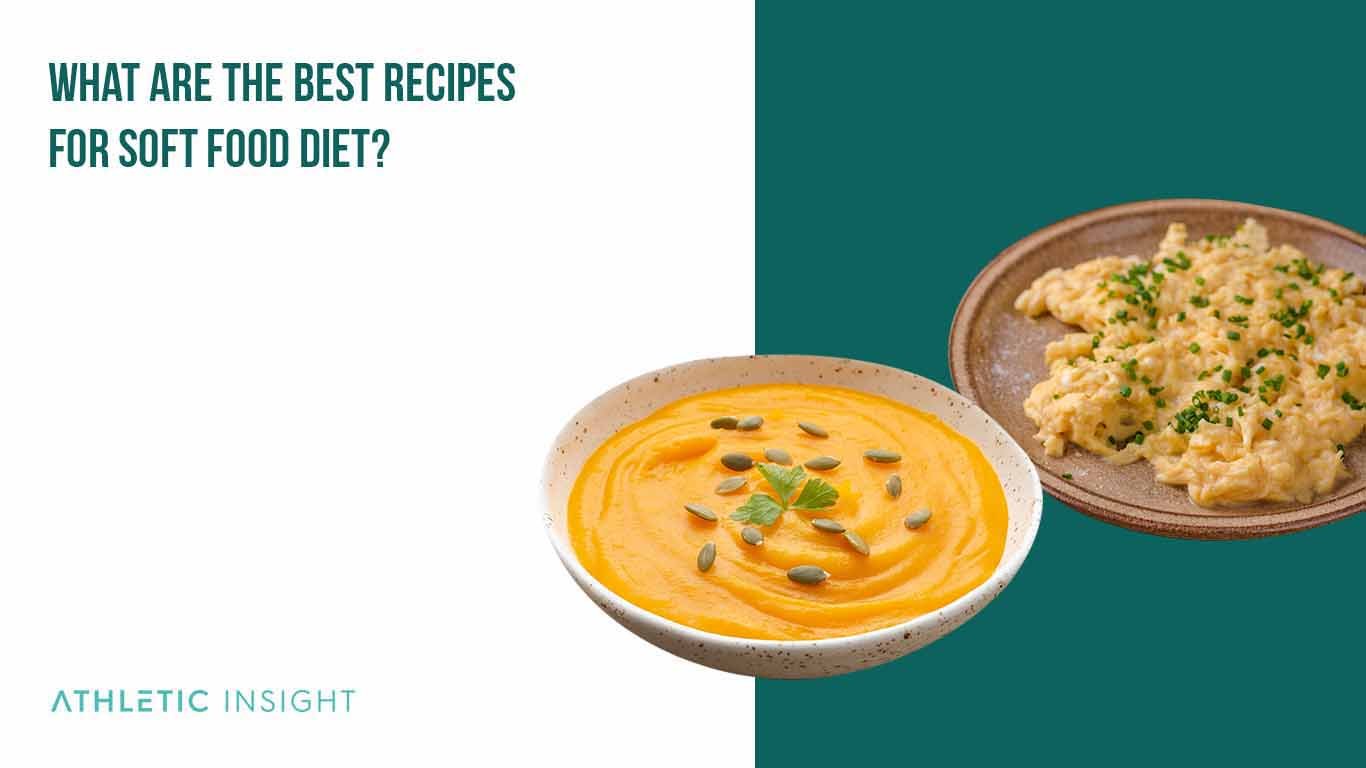
- Homemade Tomato Soup: This smooth, easy-to-swallow meal is extremely digestive and common comfort food. It provides the desirable nutrients from a tomato that would otherwise be impossible to eat. Plus, it’s easy to get a simple canned variety to heat up.
- Shepherd’s Pie: Combine mashed potatoes, peas, ground beef, and gravy into a “pie” for another nutrient-packed comfort food that’s easy on the mouth and gut.
- Greek Yogurt Pancakes: These soft, fluffy, delicious cakes substitute Greek yogurt for some of the oil and milk in a favorite pancake recipe to add protein to a tasty breakfast.
- Homemade Applesauce: Peel and cook down apples in a crock pot or on the stove to make a healthy, delicious homemade applesauce. Use a mixture of apple varieties for the best results.
- Strawberry Banana Smoothie: Combine some favorite fruits in a blender with milk, and peanut butter.
What is a Sample Soft Food Diet Plan?
A sample soft food diet plan includes some variety to avoid getting tired of the program. Mixing and matching meals and foods can make things easier.
- Monday: Start the morning with a fruit smoothie, lunch can be tomato soup, and dinner can be small portions of shepherd’s pie.
- Tuesday: Start with easy greek yogurt pancakes, kinds of rice and peas for lunch, and lasagna for dinner.
- Wednesday: Have a scrambled egg breakfast, chicken noodle soup for lunch, and meatloaf for dinner.
- Thursday: Try a fruit smoothie for breakfast, avocado egg salad or risotto for lunch, and cauliflower casserole to end the day.
- Friday: Start the day off with pancakes or waffles, roasted garlic soup in the middle of the day, and finish the day with a salmon dish.
Weekends can be more flexible, and might even include going out to eat. When dining out, consider the soup of the day or choose a brunch spot that’s sure to have plenty of soft foods on the menu.
What are the Facts About Soft Food Diet?
Here are some of the most crucial facts to know about any soft food diet.
- Soft Food Diets are primarily designed to help surgery patients recover afterward from liquid diets to soft food diets, to solid foods.
- Soft Food Diets are easier for the body to digest, easy for jaw muscles to chew, and relieve abdominal and digestive pain.
- There are two specific types of soft food diets: mechanical soft food diets and pureed soft food diets.
What Happens if You Just Eat Soft Foods?
Eating solely soft foods for a long period can prove to be detrimental to jaw health. It can weaken from reduced use and may eventually lead to tooth loss.
Potentially a person’s overall health could fail if they don’t receive the required nutrients and calories every day.
Is a Soft Food Diet Considered a Healthy Diet?
No, a soft food diet is not considered a healthy diet. It is too difficult to ingest the required daily nutrients and calories necessary for long-term health. That’s why the soft food diet is a temporary or transitional solution.
Is a Soft Food Diet Prescribed?
Yes, a soft food diet is prescribed by a doctor. Occasionally, people will elect to eat only soft foods when transitioning to another diet (like a liquid diet) or when experiencing tooth or jaw pain. It’s a natural reaction to sore teeth or a painful jaw, but not necessarily a diet choice.
What are the Types of Soft Food Diets?
There are two primary types of soft food diets, the mechanical soft food diet and a pureed soft food diet which includes liquid soft foods.
- Mechanical soft diet: Eat only blended, mashed, pureed, or chopped foods that require limited to no chewing.
- Puréed soft diet: Eat only pureed foods that go through a blender or food processor.
What is the Difference Between Soft Food Diets and Mechanical Soft Food Diets?
There is one significant difference between soft food diets and mechanical soft food diets.
A soft food diet is vague and allows for all kinds of soft foods, evening solid but soft foods. A mechanical soft food diet is limited to foods that are altered to fit the diet or that are already smashed, mashed, chopped, blended, or processed in any way.
The food in mechanical soft food diets can be chewable, but they have to be soft. It’s different from a pureed diet, where there is no chewing involved at all. This and strict liquid diets normally come after jaw surgery.
This allows for foods that may not work as they are in a soft food diet and makes them manageable. This diet, the dysphagia mechanical soft diet in particular, is designed for people who have trouble swallowing.

Easy to digest
Easy on the jaw
Easy on the teeth

